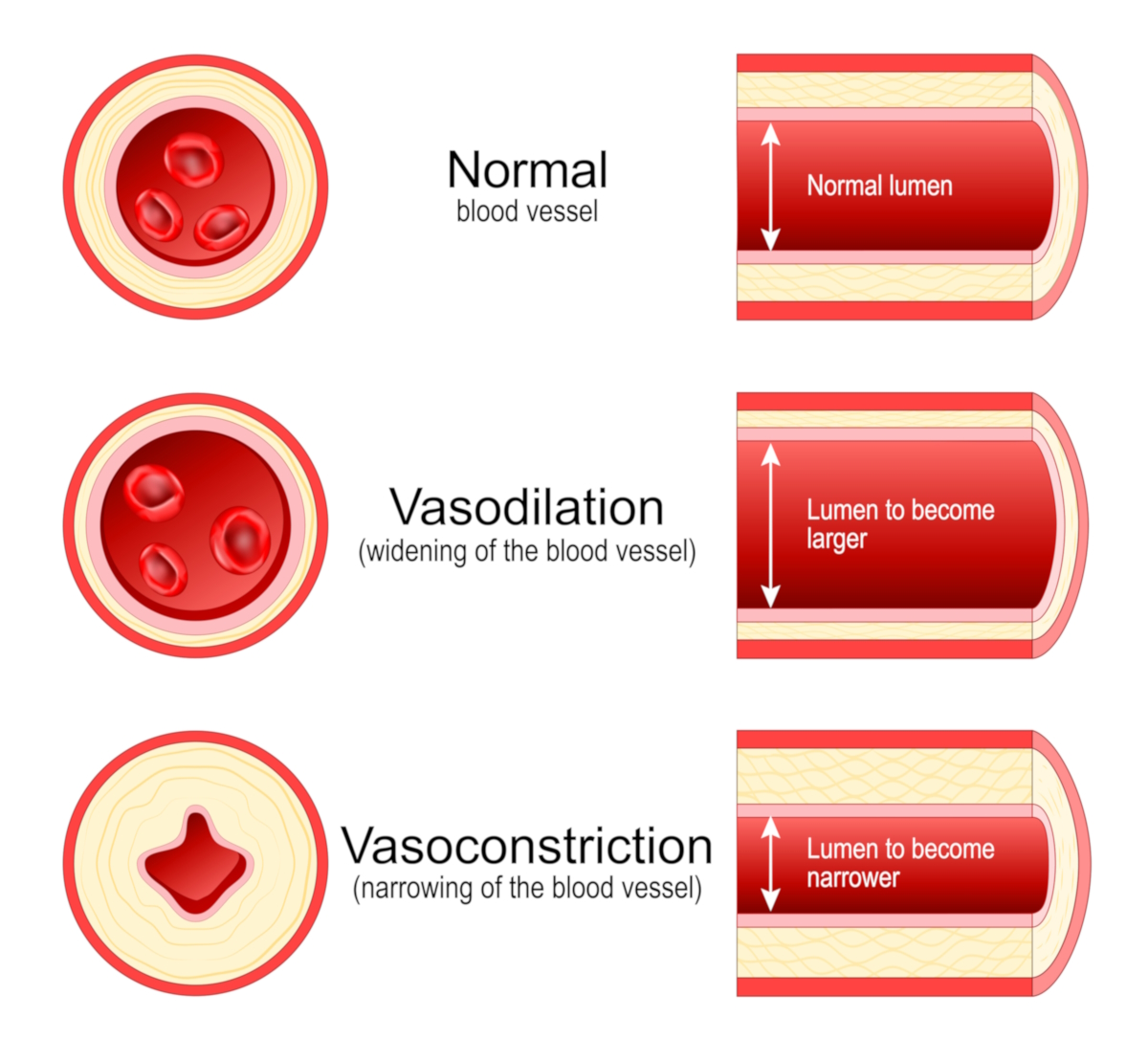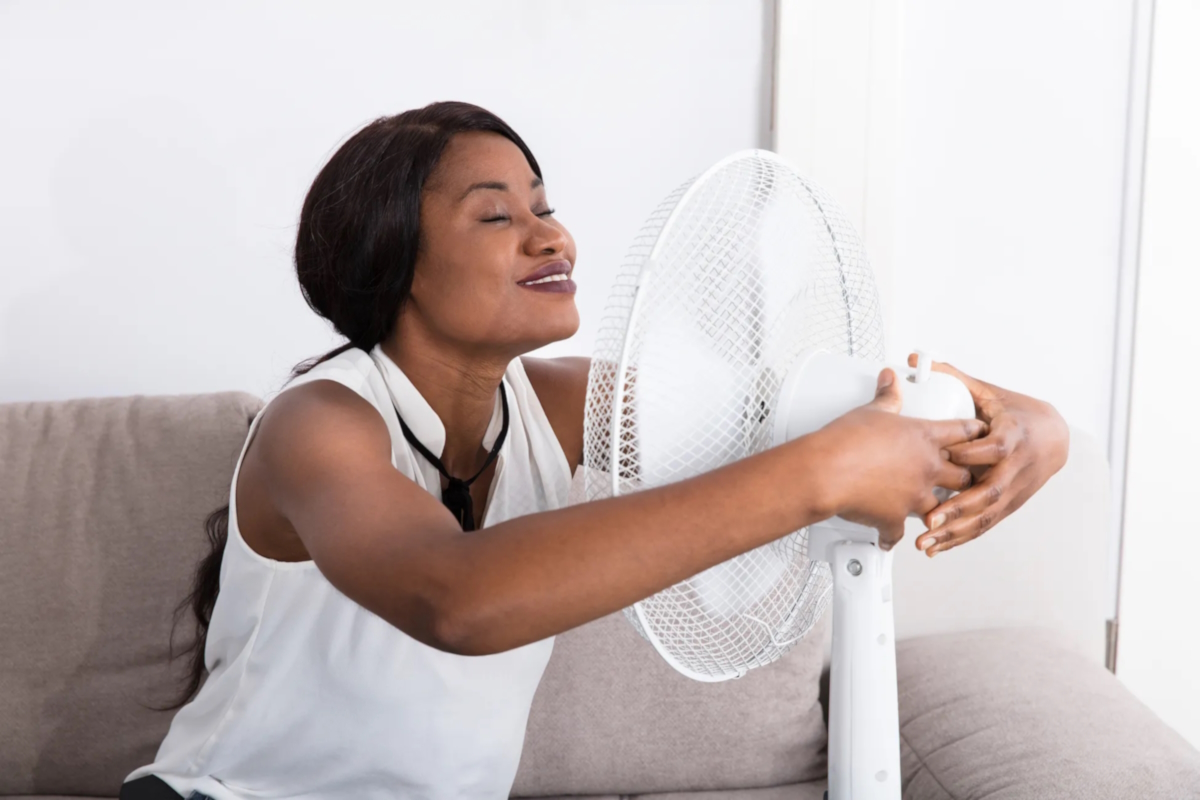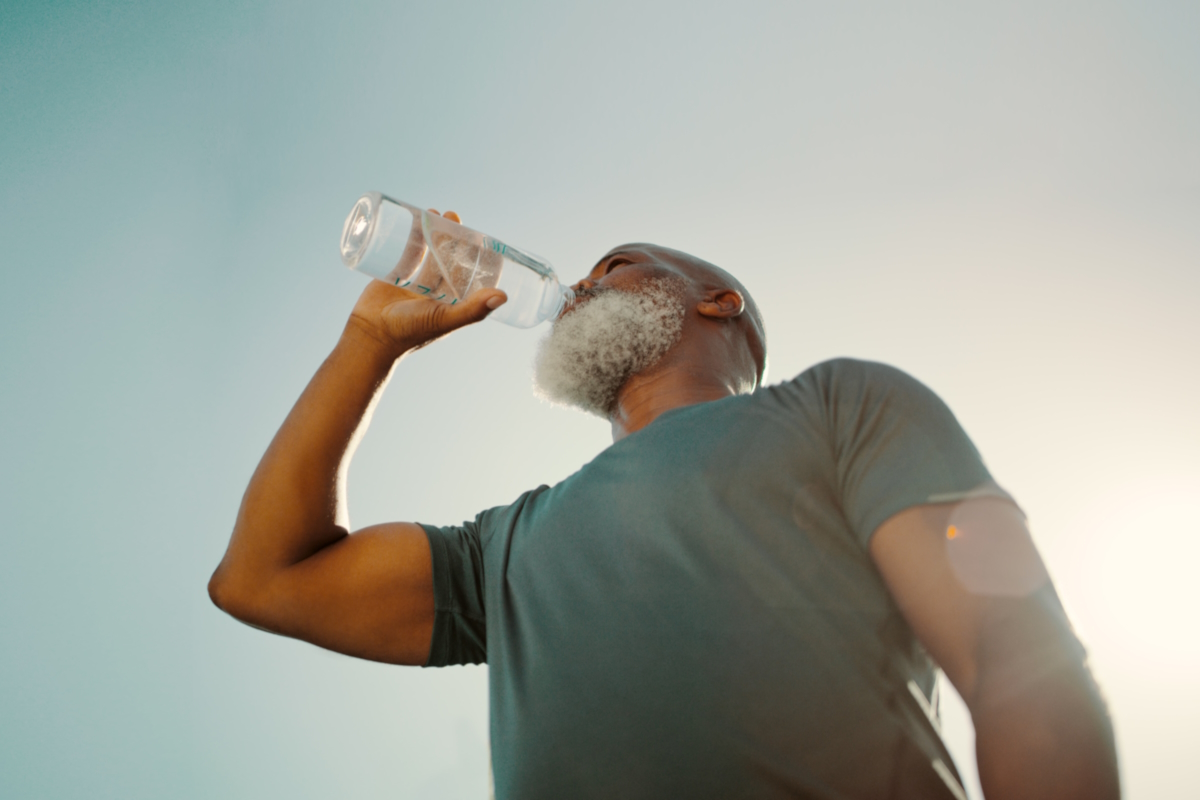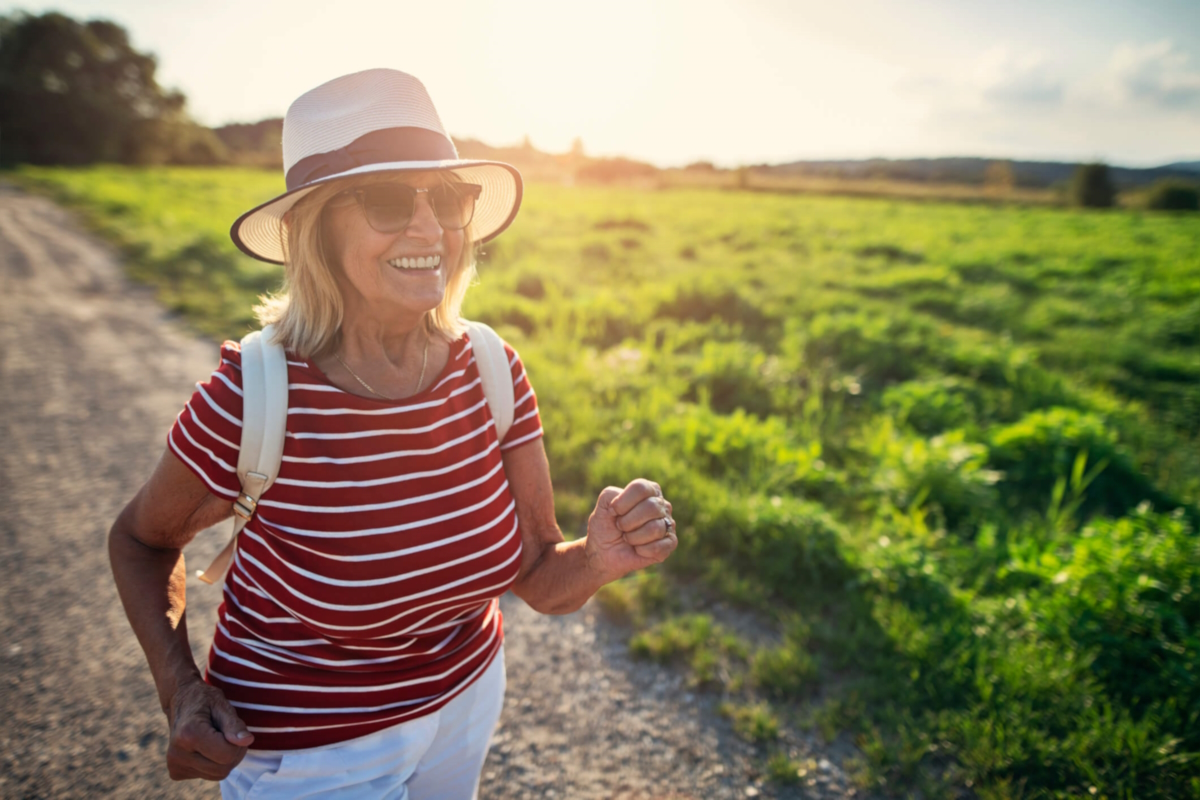Beat the Heat: 10 Tips for Summer Leg Swelling
Author: StrideCare Internal Team

Jill* loves the summer months. With the sun shining, longer days ahead, and more opportunities to take time off work, she is used to spending as much time outside as possible—whether that be a few beach days with the family, going on hikes, or hanging out on her patio. She is not alone, either. Studies show that 96% of U.S. adults value spending more time outdoors, and summer intensifies that urge. That said, summer weather also means finding ways to beat the heat and prevent summer leg swelling, also known as heat edema. Jill has experienced this phenomenon more often as she has developed uncomfortable symptoms of vein disease, leaving her to wonder if her body is trying to tell her something else is going on besides the rising temperatures.
Summer leg swelling, or heat edema, is not uncommon and can affect anyone. When temperatures consistently reach the 90s and even triple digits, our bodies naturally swell due to increased blood flow and water retention—regardless of your age, activity level, health, etc. Often swelling subsides as we retreat indoors and start to cool off, an important reminder given that August is National Summer Sun Safety Month.
However, rising temperatures are not the only reason for summer leg swelling. Age, pregnancy, too much salt in your diet, and a host of underlying health conditions—including venous insufficiency and other vein diseases—can increase your risk of heat edema and cause you to experience a variety of uncomfortable symptoms.
Summer Leg Swelling May Be Vein-Related If You Have These Symptoms
- Unexplained swelling in one or both legs
- Swelling in your feet and ankles
- Discomfort after sitting or standing for too long
- Achy or heavy feeling in your legs
- Skin that retains a dimple after being pressed for several seconds
- Muscle cramps
- Skin sensitivity (itching, redness, tenderness)
- Skin discoloration and thickened skin
- Burning sensations in the feet
Wondering if your edema or leg swelling is due to an underlying vascular condition? Schedule a consultation with a StrideCare vascular specialist today. Our collaborative approach ensures you receive the care you need.
What Is Heat Edema?
Edema is a term used to describe chronic and excess fluid in your body’s tissues that are trapped and cannot be released. Patients with edema typically notice more swelling in their legs, feet, and ankles, though it can affect any body part. It can also affect anyone but is typically more common in people who are pregnant and adults over 65. Heat edema is the same, except leg swelling is attributed explicitly to rising temperatures outside.

Along with this is a phenomenon known as vasodilation. With vasodilation, our blood vessels widen due to the relaxation of the blood vessel’s muscular walls. As a result, blood flow is enhanced to areas of the body that lack oxygen and nutrients. This is a normal process performed by our bodies and can happen at any time, but studies consistently show that the process increases in response to certain environmental situations. This includes:
- Higher temperatures — In the summer, vasodilation increases blood flow toward the skin to help cool the body.
- Exercise — Your muscles require more nutrients and oxygen during exercise. Vasodilation increases blood flow.
- Inflammation — Inflammation occurs in our bodies all the time, whether it be because of stress, injury, disease, certain foods, etc. Vasodilation increases blood flow to the affected area.
While these are all benefits of vasodilation, the process can also worsen vein disease symptoms. This is especially true if you have venous insufficiency, a condition in which broken valves do not hold a seal and cause blood pressure to build up in the lower legs.
To explain further, our veins are an intricate web system that carries blood back to the heart to support many systems critical to our cardiovascular health and other functions. As we age, vein valves can weaken and become diseased. As a result, blood is not pumped throughout the body as efficiently as it once was and begins to flow backward until it pools in our lower extremities. When there is extra vasodilation going on, more blood accumulates in these critical areas, fluid retention accumulates, and leg swelling occurs.
You don’t have to endure edema or leg swelling forever. Schedule a consultation with StrideCare’s expert physicians at one of our vein clinics near you.
10 Ways To Prevent Summer Leg Swelling
You cannot completely prevent summer leg swelling unless you intend to stay indoors with adequate air conditioning. However, there are ways to beat the summer heat, especially for individuals struggling with vein disease and wishing to avoid aggravating their symptoms.
Here are a few ways to achieve that:
1. Keep cool
Avoid or limit direct sunlight and keep your body temperature lower for longer stretches of the day. For instance, taking frequent breaks to head indoors can help regulate body temperatures. If you are by a pool, keep your legs and feet cool by swimming in cool water. Also, seek out shade when outdoors.

2. Use a cold compress
When you are overheated, applying a cold compress to swollen areas can reduce inflammation and swelling within a matter of minutes.
3. Eat healthy
Your diet helps maintain blood circulation, cardiovascular health, and proper weight. Options include fruits and vegetables, foods high in Vitamin C and E, fish and fish oil, fiber-rich foods, and whole grains.
4. Stay hydrated
When dehydrated, your body sends signals to retain the fluid present, resulting in swelling. Staying hydrated and drinking the recommended eight to 10 glasses of water daily helps your body remove waste and maintain a healthy balance of fluids.

5. Choose the proper footwear
Certain shoes can feel too tight or uncomfortable during the summer, which can potentially restrict blood flow and cause other complications.
6. Avoid tight clothing
To limit summer leg swelling, do not wear tight clothing such as jeans and pants. These clothes interrupt blood flow around the waist, upper thighs, and legs. Instead, consider dresses, loose shorts, and bathing suits to limit leg swelling and heat edema.
7. Avoid being sedentary
While sitting poolside for several hours or hanging out with friends in a lawn chair seems like a great idea, they are both passive activities that could lead to leg swelling. To combat this, take frequent breaks to stretch and walk around. Doing so gets blood flowing and fluid moving upward again.

8. Exercise
For adults, the American Heart Association recommends at least 150 minutes per week of moderate-intensity aerobic activity and gradually increasing the amount and intensity of those exercises over time. This improves blood flow and promotes a healthier lifestyle.
9. Elevate your legs
Elevating your legs for 30 minutes at least four times a day can decompress lower extremity veins and improve symptoms of leg swelling. Elevating legs uses gravity to your advantage by allowing blood that has pooled in your extremities to drain away.
10. Consider massage
Massage is a great way to get your body’s fluids moving naturally, especially in your legs and feet. Massage therapists suggest a gentle circulation motion approach and using both hands to work upward from the feet to the knees. You can do this for yourself or have someone else massage your legs and feet.
Beat Leg Swelling This Summer With StrideCare
You deserve to have as much fun in the sun as possible with family and friends this summer. Just be aware that leg swelling and heat edema can be unintended consequences. For some people, these symptoms of swelling will subside quickly and without any discomfort. For others, especially those already struggling with vein disease, it may become a bigger issue than anticipated. As a result, you may think that the only option is to avoid being outside altogether. This does not have to be the case, and StrideCare can help.
StrideCare has long been a leader in multi-specialty care for treating lower-extremity vascular and podiatric conditions. That includes our ability to perform leading-edge procedures to treat artery and vein disease and symptoms that, while minor in their earliest stages, can eventually lead to more serious and life interrupting issues. The experts at StrideCare will recommend an individualized plan to help you get the best results.
Please contact us at 866-552-4866 or complete the appointment form to schedule a consultation. We are here to help, all while providing compassionate patient care.
Prior to starting any new treatment or questions regarding a medical condition, always seek the advice of your doctor or other qualified health provider. This information is not a substitute for professional medical advice.
StrideCare serves North Texas and South Texas communities, including Houston, Sugar Land, Katy, Webster, Clear Lake, The Woodlands, Lake Jackson, San Antonio, Stone Oak, Austin, Round Rock, Bastrop, Brushy Creek, Cedar Park, Converse, Georgetown, Hutto, Kyle, Leander, Marble Falls, New Braunfels, Pasadena, Pearland, Pflugerville, San Marcos, Schertz, Bay City, Universal City, Spring, Kingwood, Stafford, Conroe, Texas City, Cypress, League City, Bellaire, Dallas, Mesquite, Addison, Arlington, Plano, McKinney, Craig Ranch, Prosper, Flower Mound, Euless, Southlake, South Dallas, Sherman, Irving, Garland, Carrollton, Rowlett, Coppell, Forney, Rockwall, and more.
*Patient names and/or photos may be changed to protect patient confidentiality.


